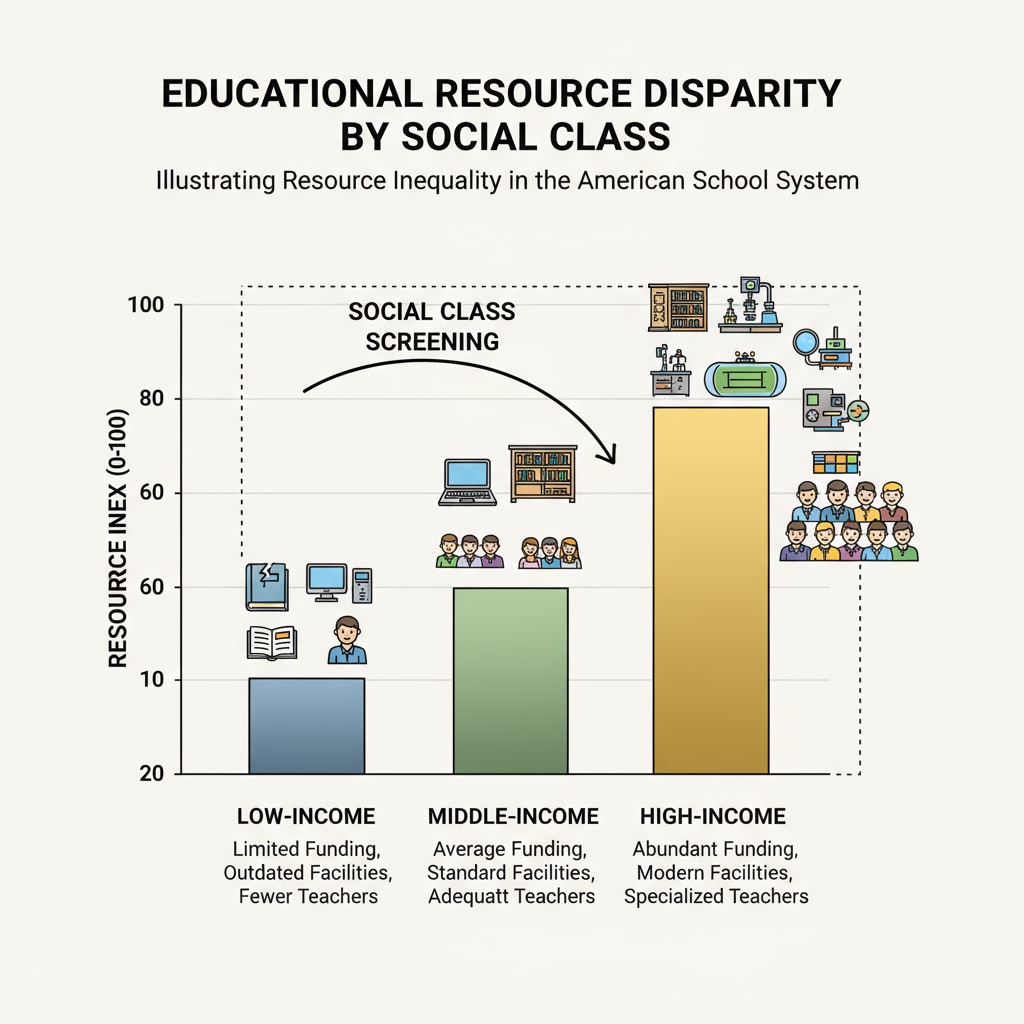The American school system, a complex institution deeply ingrained in society, has long been a subject of scrutiny when it comes to social class screening. In this analysis, we will explore how this system functions as a mechanism that not only reflects but also perpetuates social inequality.

The Conceptual Confusion: Education vs. School
One of the fundamental issues lies in the often-confused concepts of “education” and “school.” Education is a broad concept encompassing the acquisition of knowledge, skills, and values. However, in the American context, the school system has somewhat monopolized the idea of education. As defined by Wikipedia’s entry on education, education is a lifelong process, yet schools are seen as the primary providers. This confusion has led to an over-reliance on the school system, which, in turn, has become a breeding ground for social class distinctions. For example, students from affluent families often have access to better-equipped schools with more experienced teachers, while those from lower-income backgrounds struggle with underfunded institutions.
The Mechanisms of Social Class Screening
The American school system employs various mechanisms for social class screening. Standardized testing is one such significant tool. These tests, which are supposed to measure academic proficiency, often reflect the social and economic backgrounds of students. As stated in Britannica’s article on standardized tests, students from higher social classes are more likely to have access to test preparation resources, giving them an advantage. Another mechanism is the funding model. Schools in wealthy neighborhoods receive more funding, enabling them to offer a wider range of extracurricular activities and advanced courses. In contrast, schools in poor areas lack these resources, further widening the gap between social classes.

In addition to these, the curriculum also plays a role. The curriculum in many American schools is designed in a way that may favor students from certain social backgrounds. For instance, literature and history courses may focus on the experiences of the dominant social groups, leaving students from marginalized backgrounds feeling disconnected. This not only affects their academic performance but also their sense of identity and belonging within the educational system.
In conclusion, the American school system, despite its noble ideals of providing equal education, has inadvertently become a powerful social class screening tool. The confusion between education and school concepts, along with various screening mechanisms, has contributed to the persistence of social inequality. It is essential that we recognize these issues and work towards reforming the system to ensure a more equitable educational landscape for all students. Readability guidance: This article uses short paragraphs to clearly present ideas. Each H2 section provides key points. Passive voice is minimized, and transition words like “however,” “in addition,” and “for example” are used to enhance the flow of the text.


